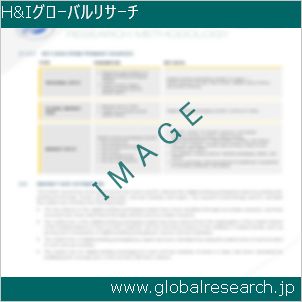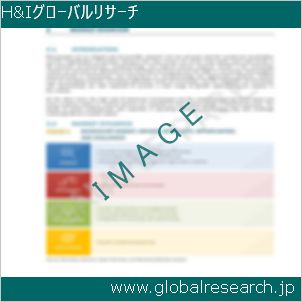1 Market Overview
1.1 Li-ion Battery Management ICs Introduction
1.2 Market Analysis by Type
1.2.1 Overview: Global Li-ion Battery Management ICs Revenue by Type: 2017 Versus 2021 Versus 2028
1.2.2 Single Cell Battery Management ICs
1.2.3 Multi-cell Battery Management ICs
1.3 Market Analysis by Application
1.3.1 Overview: Global Li-ion Battery Management ICs Revenue by Application: 2017 Versus 2021 Versus 2028
1.3.2 Consumer Electronics
1.3.3 Industrial Applications
1.3.4 Automotive Applications
1.3.5 Telecom & Networking
1.3.6 Others
1.4 Global Li-ion Battery Management ICs Market Size & Forecast
1.4.1 Global Li-ion Battery Management ICs Sales in Value (2017 & 2021 & 2028)
1.4.2 Global Li-ion Battery Management ICs Sales in Volume (2017-2028)
1.4.3 Global Li-ion Battery Management ICs Price (2017-2028)
1.5 Global Li-ion Battery Management ICs Production Capacity Analysis
1.5.1 Global Li-ion Battery Management ICs Total Production Capacity (2017-2028)
1.5.2 Global Li-ion Battery Management ICs Production Capacity by Geographic Region
1.6 Market Drivers, Restraints and Trends
1.6.1 Li-ion Battery Management ICs Market Drivers
1.6.2 Li-ion Battery Management ICs Market Restraints
1.6.3 Li-ion Battery Management ICs Trends Analysis
2 Manufacturers Profiles
2.1 Texas Instruments
2.1.1 Texas Instruments Details
2.1.2 Texas Instruments Major Business
2.1.3 Texas Instruments Li-ion Battery Management ICs Product and Services
2.1.4 Texas Instruments Li-ion Battery Management ICs Sales, Price, Revenue, Gross Margin and Market Share (2019, 2020, 2021, and 2022)
2.2 STMicroelectronics
2.2.1 STMicroelectronics Details
2.2.2 STMicroelectronics Major Business
2.2.3 STMicroelectronics Li-ion Battery Management ICs Product and Services
2.2.4 STMicroelectronics Li-ion Battery Management ICs Sales, Price, Revenue, Gross Margin and Market Share (2019, 2020, 2021, and 2022)
2.3 NXP
2.3.1 NXP Details
2.3.2 NXP Major Business
2.3.3 NXP Li-ion Battery Management ICs Product and Services
2.3.4 NXP Li-ion Battery Management ICs Sales, Price, Revenue, Gross Margin and Market Share (2019, 2020, 2021, and 2022)
2.4 Renesas Electronics
2.4.1 Renesas Electronics Details
2.4.2 Renesas Electronics Major Business
2.4.3 Renesas Electronics Li-ion Battery Management ICs Product and Services
2.4.4 Renesas Electronics Li-ion Battery Management ICs Sales, Price, Revenue, Gross Margin and Market Share (2019, 2020, 2021, and 2022)
2.5 ON Semiconductor
2.5.1 ON Semiconductor Details
2.5.2 ON Semiconductor Major Business
2.5.3 ON Semiconductor Li-ion Battery Management ICs Product and Services
2.5.4 ON Semiconductor Li-ion Battery Management ICs Sales, Price, Revenue, Gross Margin and Market Share (2019, 2020, 2021, and 2022)
2.6 Qualcomm
2.6.1 Qualcomm Details
2.6.2 Qualcomm Major Business
2.6.3 Qualcomm Li-ion Battery Management ICs Product and Services
2.6.4 Qualcomm Li-ion Battery Management ICs Sales, Price, Revenue, Gross Margin and Market Share (2019, 2020, 2021, and 2022)
2.7 Analog Devices
2.7.1 Analog Devices Details
2.7.2 Analog Devices Major Business
2.7.3 Analog Devices Li-ion Battery Management ICs Product and Services
2.7.4 Analog Devices Li-ion Battery Management ICs Sales, Price, Revenue, Gross Margin and Market Share (2019, 2020, 2021, and 2022)
2.8 Infineon Technologies
2.8.1 Infineon Technologies Details
2.8.2 Infineon Technologies Major Business
2.8.3 Infineon Technologies Li-ion Battery Management ICs Product and Services
2.8.4 Infineon Technologies Li-ion Battery Management ICs Sales, Price, Revenue, Gross Margin and Market Share (2019, 2020, 2021, and 2022)
2.9 ROHM
2.9.1 ROHM Details
2.9.2 ROHM Major Business
2.9.3 ROHM Li-ion Battery Management ICs Product and Services
2.9.4 ROHM Li-ion Battery Management ICs Sales, Price, Revenue, Gross Margin and Market Share (2019, 2020, 2021, and 2022)
2.10 MAXIM Integrated
2.10.1 MAXIM Integrated Details
2.10.2 MAXIM Integrated Major Business
2.10.3 MAXIM Integrated Li-ion Battery Management ICs Product and Services
2.10.4 MAXIM Integrated Li-ion Battery Management ICs Sales, Price, Revenue, Gross Margin and Market Share (2019, 2020, 2021, and 2022)
2.11 Diodes Incorporated
2.11.1 Diodes Incorporated Details
2.11.2 Diodes Incorporated Major Business
2.11.3 Diodes Incorporated Li-ion Battery Management ICs Product and Services
2.11.4 Diodes Incorporated Li-ion Battery Management ICs Sales, Price, Revenue, Gross Margin and Market Share (2019, 2020, 2021, and 2022)
2.12 Richtek Technology
2.12.1 Richtek Technology Details
2.12.2 Richtek Technology Major Business
2.12.3 Richtek Technology Li-ion Battery Management ICs Product and Services
2.12.4 Richtek Technology Li-ion Battery Management ICs Sales, Price, Revenue, Gross Margin and Market Share (2019, 2020, 2021, and 2022)
2.13 Microchip Technology
2.13.1 Microchip Technology Details
2.13.2 Microchip Technology Major Business
2.13.3 Microchip Technology Li-ion Battery Management ICs Product and Services
2.13.4 Microchip Technology Li-ion Battery Management ICs Sales, Price, Revenue, Gross Margin and Market Share (2019, 2020, 2021, and 2022)
2.14 LAPIS Semiconductor
2.14.1 LAPIS Semiconductor Details
2.14.2 LAPIS Semiconductor Major Business
2.14.3 LAPIS Semiconductor Li-ion Battery Management ICs Product and Services
2.14.4 LAPIS Semiconductor Li-ion Battery Management ICs Sales, Price, Revenue, Gross Margin and Market Share (2019, 2020, 2021, and 2022)
2.15 Vishay
2.15.1 Vishay Details
2.15.2 Vishay Major Business
2.15.3 Vishay Li-ion Battery Management ICs Product and Services
2.15.4 Vishay Li-ion Battery Management ICs Sales, Price, Revenue, Gross Margin and Market Share (2019, 2020, 2021, and 2022)
2.16 New Japan Radio (NJR)
2.16.1 New Japan Radio (NJR) Details
2.16.2 New Japan Radio (NJR) Major Business
2.16.3 New Japan Radio (NJR) Li-ion Battery Management ICs Product and Services
2.16.4 New Japan Radio (NJR) Li-ion Battery Management ICs Sales, Price, Revenue, Gross Margin and Market Share (2019, 2020, 2021, and 2022)
2.17 Skyworks
2.17.1 Skyworks Details
2.17.2 Skyworks Major Business
2.17.3 Skyworks Li-ion Battery Management ICs Product and Services
2.17.4 Skyworks Li-ion Battery Management ICs Sales, Price, Revenue, Gross Margin and Market Share (2019, 2020, 2021, and 2022)
2.18 Hycon Technology
2.18.1 Hycon Technology Details
2.18.2 Hycon Technology Major Business
2.18.3 Hycon Technology Li-ion Battery Management ICs Product and Services
2.18.4 Hycon Technology Li-ion Battery Management ICs Sales, Price, Revenue, Gross Margin and Market Share (2019, 2020, 2021, and 2022)
2.19 Semtech
2.19.1 Semtech Details
2.19.2 Semtech Major Business
2.19.3 Semtech Li-ion Battery Management ICs Product and Services
2.19.4 Semtech Li-ion Battery Management ICs Sales, Price, Revenue, Gross Margin and Market Share (2019, 2020, 2021, and 2022)
2.20 Silergy Corp
2.20.1 Silergy Corp Details
2.20.2 Silergy Corp Major Business
2.20.3 Silergy Corp Li-ion Battery Management ICs Product and Services
2.20.4 Silergy Corp Li-ion Battery Management ICs Sales, Price, Revenue, Gross Margin and Market Share (2019, 2020, 2021, and 2022)
3 Li-ion Battery Management ICs Breakdown Data by Manufacturer
3.1 Global Li-ion Battery Management ICs Sales in Volume by Manufacturer (2019, 2020, 2021, and 2022)
3.2 Global Li-ion Battery Management ICs Revenue by Manufacturer (2019, 2020, 2021, and 2022)
3.3 Key Manufacturer Market Position in Li-ion Battery Management ICs
3.4 Market Concentration Rate
3.4.1 Top 3 Li-ion Battery Management ICs Manufacturer Market Share in 2021
3.4.2 Top 6 Li-ion Battery Management ICs Manufacturer Market Share in 2021
3.5 Global Li-ion Battery Management ICs Production Capacity by Company: 2021 VS 2022
3.6 Manufacturer by Geography: Head Office and Li-ion Battery Management ICs Production Site
3.7 New Entrant and Capacity Expansion Plans
3.8 Mergers & Acquisitions
4 Market Analysis by Region
4.1 Global Li-ion Battery Management ICs Market Size by Region
4.1.1 Global Li-ion Battery Management ICs Sales in Volume by Region (2017-2028)
4.1.2 Global Li-ion Battery Management ICs Revenue by Region (2017-2028)
4.2 North America Li-ion Battery Management ICs Revenue (2017-2028)
4.3 Europe Li-ion Battery Management ICs Revenue (2017-2028)
4.4 Asia-Pacific Li-ion Battery Management ICs Revenue (2017-2028)
4.5 South America Li-ion Battery Management ICs Revenue (2017-2028)
4.6 Middle East and Africa Li-ion Battery Management ICs Revenue (2017-2028)
5 Market Segment by Type
5.1 Global Li-ion Battery Management ICs Sales in Volume by Type (2017-2028)
5.2 Global Li-ion Battery Management ICs Revenue by Type (2017-2028)
5.3 Global Li-ion Battery Management ICs Price by Type (2017-2028)
6 Market Segment by Application
6.1 Global Li-ion Battery Management ICs Sales in Volume by Application (2017-2028)
6.2 Global Li-ion Battery Management ICs Revenue by Application (2017-2028)
6.3 Global Li-ion Battery Management ICs Price by Application (2017-2028)
7 North America by Country, by Type, and by Application
7.1 North America Li-ion Battery Management ICs Sales by Type (2017-2028)
7.2 North America Li-ion Battery Management ICs Sales by Application (2017-2028)
7.3 North America Li-ion Battery Management ICs Market Size by Country
7.3.1 North America Li-ion Battery Management ICs Sales in Volume by Country (2017-2028)
7.3.2 North America Li-ion Battery Management ICs Revenue by Country (2017-2028)
7.3.3 United States Market Size and Forecast (2017-2028)
7.3.4 Canada Market Size and Forecast (2017-2028)
7.3.5 Mexico Market Size and Forecast (2017-2028)
8 Europe by Country, by Type, and by Application
8.1 Europe Li-ion Battery Management ICs Sales by Type (2017-2028)
8.2 Europe Li-ion Battery Management ICs Sales by Application (2017-2028)
8.3 Europe Li-ion Battery Management ICs Market Size by Country
8.3.1 Europe Li-ion Battery Management ICs Sales in Volume by Country (2017-2028)
8.3.2 Europe Li-ion Battery Management ICs Revenue by Country (2017-2028)
8.3.3 Germany Market Size and Forecast (2017-2028)
8.3.4 France Market Size and Forecast (2017-2028)
8.3.5 United Kingdom Market Size and Forecast (2017-2028)
8.3.6 Russia Market Size and Forecast (2017-2028)
8.3.7 Italy Market Size and Forecast (2017-2028)
9 Asia-Pacific by Region, by Type, and by Application
9.1 Asia-Pacific Li-ion Battery Management ICs Sales by Type (2017-2028)
9.2 Asia-Pacific Li-ion Battery Management ICs Sales by Application (2017-2028)
9.3 Asia-Pacific Li-ion Battery Management ICs Market Size by Region
9.3.1 Asia-Pacific Li-ion Battery Management ICs Sales in Volume by Region (2017-2028)
9.3.2 Asia-Pacific Li-ion Battery Management ICs Revenue by Region (2017-2028)
9.3.3 China Market Size and Forecast (2017-2028)
9.3.4 Japan Market Size and Forecast (2017-2028)
9.3.5 Korea Market Size and Forecast (2017-2028)
9.3.6 India Market Size and Forecast (2017-2028)
9.3.7 Southeast Asia Market Size and Forecast (2017-2028)
9.3.8 Australia Market Size and Forecast (2017-2028)
10 South America by Region, by Type, and by Application
10.1 South America Li-ion Battery Management ICs Sales by Type (2017-2028)
10.2 South America Li-ion Battery Management ICs Sales by Application (2017-2028)
10.3 South America Li-ion Battery Management ICs Market Size by Country
10.3.1 South America Li-ion Battery Management ICs Sales in Volume by Country (2017-2028)
10.3.2 South America Li-ion Battery Management ICs Revenue by Country (2017-2028)
10.3.3 Brazil Market Size and Forecast (2017-2028)
10.3.4 Argentina Market Size and Forecast (2017-2028)
11 Middle East & Africa by Country, by Type, and by Application
11.1 Middle East & Africa Li-ion Battery Management ICs Sales by Type (2017-2028)
11.2 Middle East & Africa Li-ion Battery Management ICs Sales by Application (2017-2028)
11.3 Middle East & Africa Li-ion Battery Management ICs Market Size by Country
11.3.1 Middle East & Africa Li-ion Battery Management ICs Sales in Volume by Country (2017-2028)
11.3.2 Middle East & Africa Li-ion Battery Management ICs Revenue by Country (2017-2028)
11.3.3 Turkey Market Size and Forecast (2017-2028)
11.3.4 Egypt Market Size and Forecast (2017-2028)
11.3.5 Saudi Arabia Market Size and Forecast (2017-2028)
11.3.6 South Africa Market Size and Forecast (2017-2028)
12 Raw Material and Industry Chain
12.1 Raw Material of Li-ion Battery Management ICs and Key Manufacturers
12.2 Manufacturing Costs Percentage of Li-ion Battery Management ICs
12.3 Li-ion Battery Management ICs Production Process
12.4 Li-ion Battery Management ICs Industrial Chain
13 Sales Channel, Distributors, Traders and Dealers
13.1 Sales Channel
13.1.1 Direct Marketing
13.1.2 Indirect Marketing
13.2 Li-ion Battery Management ICs Typical Distributors
13.3 Li-ion Battery Management ICs Typical Customers
14 Research Findings and Conclusion
15 Appendix
15.1 Methodology
15.2 Research Process and Data Source
15.3 Disclaimer
❖ 免責事項 ❖
http://www.globalresearch.jp/disclaimer


